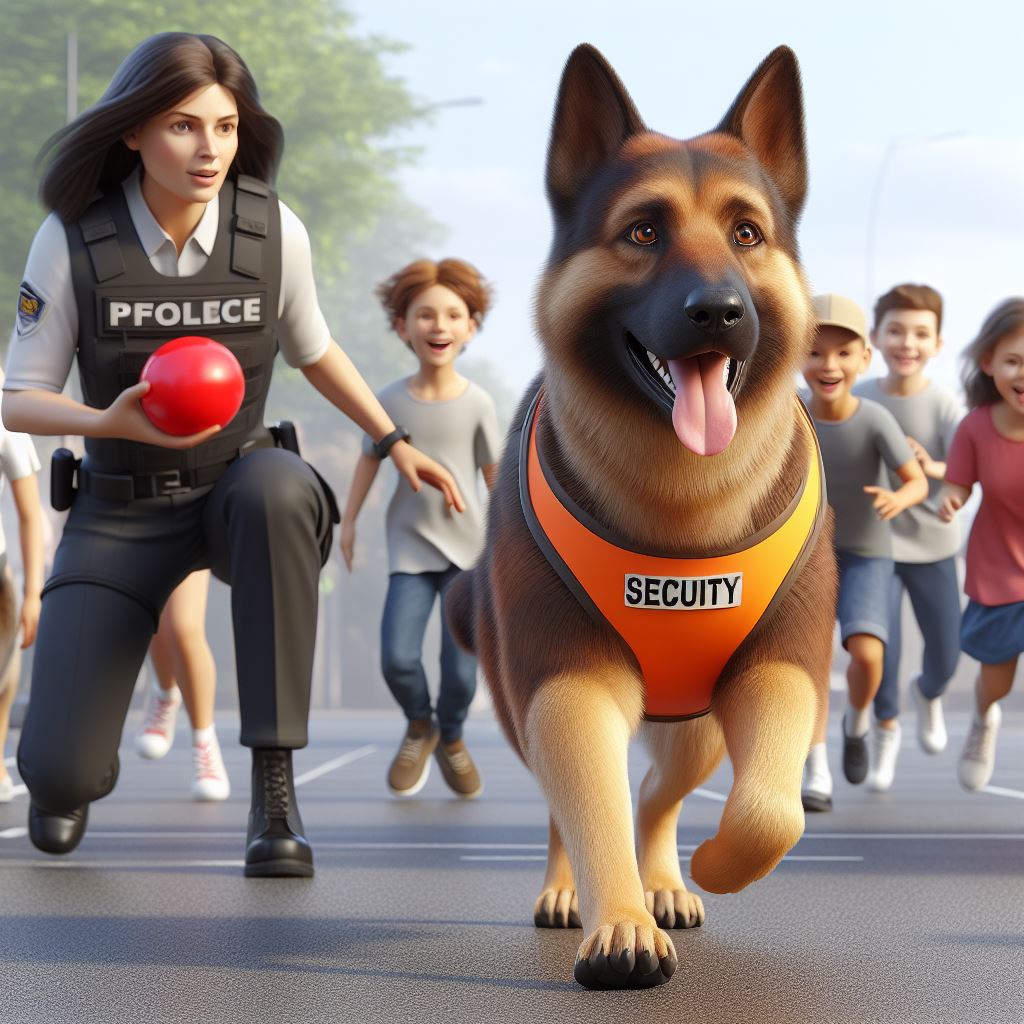Understand what you need to do in case your neighbors dog bites you outside of their compound.
Dog Bites outside the Compound: A Comprehensive Guide to Protecting Yourself and Your Rights
Dog bites are a surprisingly common occurrence, with millions reported in the U.S. annually. While most bites are minor, they can still cause significant injury, emotional distress, and even the risk of infection. The situation becomes particularly complex when the bite occurs outside the dog's own compound, leaving you feeling violated and unsure of your next steps. This comprehensive guide empowers you with the knowledge and resources needed to navigate this challenging experience.
Understanding the Gravity of the Situation:
A dog bite outside the compound signifies a potential breach of dog ownership responsibility. Here's why it's crucial to take immediate action:
- Potential for Injury: Dog bites can range from superficial scratches to severe punctures, lacerations, and even broken bones. In rare cases, they can transmit diseases like rabies or tetanus.
- Emotional Trauma: Animal attacks can be terrifying and leave lasting emotional scars, especially for children.
- Legal Repercussions: Dog owners have a legal responsibility to control their pets. Bites outside the compound potentially violate leash laws and expose the owner to liability.
Immediate Actions to Ensure Your Safety:
The first priority following a dog bite is ensuring your safety and minimizing potential harm:
- Escape the Situation: If the dog is still aggressive, prioritize your safety. Move to a safe location and avoid provoking the animal further. Don't attempt to fight back - you risk further injury.
- Assess the Wound: Once safe, assess the severity of the bite wound. Minor scratches might not require immediate medical attention, but deeper wounds or significant bleeding necessitate a trip to the emergency room.
- Control Bleeding: For any bleeding wounds, apply direct pressure with a clean cloth to stop the bleeding. Maintain pressure until medical help arrives or the bleeding subsides.
Seeking Medical Attention:
Prompt medical attention is crucial, even for seemingly minor bites:
- Visit the Doctor or Emergency Room: A doctor can thoroughly clean and dress the wound, assess the risk of infection, and potentially administer rabies prophylaxis (preventive treatment) if necessary.
- Explain the Circumstances: Inform the doctor about how the bite occurred, including details like the dog's breed (if identifiable), the location of the incident, and your neighbor's contact information, if known.
- Request Documentation: Get a detailed doctor's report that describes the bite wound, the treatment provided, and any recommendations for follow-up care. This documentation serves as vital evidence for potential legal actions.
Contacting Your Neighbor:
Communication with your neighbor is essential:
- Report the Incident: As soon as possible, inform your neighbor about the dog bite incident. This allows them to take responsibility for their pet and ensure the animal is up-to-date on vaccinations.
- Gather Information: Get your neighbor's contact details and homeowner's insurance information. This may be necessary for filing a claim to recoup medical expenses.
- Maintain a Calm Demeanor: While frustration is understandable, maintaining a calm demeanor during communication is key. Focus on factual information about the incident and avoid accusations.
Exploring Legal Options:
The severity of the bite and your neighbor's response will influence your decision to pursue legal action:
- Consult an Attorney: Consider consulting with an attorney specializing in animal attacks to understand your legal options. They can advise you on potential claims for medical expenses, emotional distress, or lost wages due to the injury.
- Animal Control Involvement: If you suspect the dog is aggressive or not properly vaccinated, report the incident to animal control. They can investigate and take necessary action, such as quarantining the dog or issuing citations to the owner.
- Homeowner's Insurance: If you have homeowner's insurance, check your policy to see if it covers dog bite injuries. You might be able to file a claim with your own insurance company to recover medical expenses, and they may then pursue your neighbor's homeowner's insurance for reimbursement.
Building Your Case: Documentation and Evidence
Throughout this process, maintaining detailed records is critical:
- Medical Records: Keep copies of all doctor's reports, receipts for medical treatment, and any prescriptions provided.
- Photos: Take clear photos of the bite wound, both immediately after the incident and as it heals over time.
- Witness Statements: If anyone witnessed the dog bite, obtain written statements from them detailing what they saw.
- Animal Control Reports: If you filed a report with animal control, get a copy of the report for your records.
- Communication Records: Maintain copies of any communication you have with your neighbor, including emails, voicemails, or text messages regarding the incident.
Preventing Future Incidents
Dog bites can be a traumatic experience, leaving you not only dealing with the physical and emotional aftermath but also concerned about future encounters. Following the steps outlined in the previous article empowers you to address the immediate situation and your legal rights. However, preventing future incidents is equally important, especially when the bite occurred outside the dog's compound. This article delves into proactive steps you can take to minimize the risk of similar incidents.
Understanding Dog Behavior:
Dogs communicate primarily through body language. By learning to recognize canine signals, you can better anticipate and avoid potentially dangerous situations:
- Signs of Aggression: Stiff body posture, growling, baring teeth, snarling, and a curled tail are all signs of aggression. Avoid approaching or making eye contact with a dog displaying such behavior.
- Fear Signals: Whining, cowering, flattened ears, and tucked tails indicate fear. Give a fearful dog ample space and avoid making sudden movements.
- Playful Behavior: While seemingly harmless, overly enthusiastic play can lead to accidental scratches or bites. Be mindful of a dog's energy level and avoid engaging in rough play, especially with unfamiliar dogs.
Maintaining Safe Interactions:
Knowing how to interact with dogs safely can significantly reduce the risk of bites:
- Ask Permission: Always ask a dog owner for permission before approaching or petting their animal, regardless of the dog's size or breed.
- Respect Boundaries: Don't crowd a dog, pat its head (a dominant gesture), or make sudden movements. Allow the dog to approach you at its own pace and sniff your hand before initiating further interaction.
- Be Mindful of Children: Supervise children closely around unfamiliar dogs. Teach them proper dog etiquette, such as avoiding eye contact and not grabbing at toys or food.
- Avoid High-Risk Situations: Don't approach a dog that is eating, sleeping, or caring for puppies. These are situations where a dog might feel more protective and react defensively.
Community Awareness and Advocacy:
Promoting responsible dog ownership within your community can contribute to overall safety:
- Report Loose Dogs: If you see a dog running loose, especially in a residential area, report it to animal control. This helps ensure the safety of the community and prevents similar incidents.
- Advocate for Leash Laws: If your community lacks strong leash laws or enforcement is lax, consider advocating for stricter regulations or increased enforcement.
- Community Education Initiatives: Support or participate in community education initiatives that promote responsible dog ownership and dog bite prevention.
Personal Safety Measures:
While you cannot always control the behavior of others, certain measures can enhance your personal safety:
- Carry Deterrents: Consider carrying deterrents like pepper spray (where legal) as a last resort if you feel threatened by an aggressive dog. However, prioritize de-escalation over confrontation.
- Alert Others: If you see an unleashed dog approaching, especially if it displays aggressive behavior, alert others in the vicinity to warn them of the potential danger.
- Be Prepared to Walk Away: If you encounter a situation that feels unsafe, don't hesitate to walk away or seek refuge in a secure location.
Empowering Yourself Through Knowledge:
Educating yourself about dog breeds and their temperaments can help you navigate situations more confidently:
- Research Dog Breeds: Learn about the characteristics and common traits of different dog breeds. While breed isn't a definitive indicator of temperament, understanding general tendencies can be helpful.
- Dog Body Language Resources: There are many online resources and books available that teach you how to read dog body language. This knowledge empowers you to anticipate a dog's mood and avoid potential conflicts.
- Dog Training Classes: Consider attending basic dog training classes, even if you don't own a dog. This experience can provide valuable insights into canine behavior and communication.
Building a Supportive Network:
Having a support network can be crucial after a traumatic dog bite experience:
- Seek Emotional Support: Don't hesitate to seek professional help from a therapist or counselor to cope with the emotional aftermath of the bite.
- Connect with Others: Support groups for dog bite victims can provide a safe space to share your experiences and connect with others who understand your situation.
- Communicate with Loved Ones: Keep your loved ones informed about the situation and allow them to offer support throughout the process of recovery and potential legal actions.
Conclusion
Dog bites are a preventable public safety issue. While legal measures address the immediate aftermath of a bite, a proactive approach is key to creating a safer community for everyone. By understanding dog behavior and practicing responsible interactions, you can empower yourself and others to navigate canine encounters with confidence. Advocating for leash laws and supporting community education initiatives further contribute to a safety net.
The emotional toll of a dog bite can be significant. Don't hesitate to seek emotional support and lean on your loved ones for strength. Remember, you are not alone in this journey. Through awareness, responsible ownership, and a commitment to safety, we can all work towards a future where dog encounters are positive and enjoyable for both humans and canines.


























